Happy August! Today we have a guest post from Rachel Nichols, a SLOCA parent who went on our “Black History in America: Opening Hearts & Minds” trip with Simply Culture Boutique Travel in July 2021. Over 8 days, parents and students traveled to Alabama, Tennessee and Louisiana. Thank you Rachel for sharing your experience with the SLO Classical Academy community.
In 2021, we find ourselves at a point in history that, in some ways, feels similar to the Civil Rights era of the 1960s. Regardless of where you stand politically, there is no denying that many black people feel that Dr. Martin Luther King Jr.’s Dream has not yet been realized. Black children do not “live in a nation where they will not be judged by the color of their skin but by the content of their character.” Millions of black people unfortunately need to remind the rest of the world that their lives matter.
How did we get here? Why are we still here? Have we made any progress? Where is the finish line and how close are we to it? Is there even a finish line? As a white woman, what can I do? These questions are difficult, and many may not have clear answers. But I want to try searching. I want to travel to uncomfortable places and look for answers.
Who better to explore these questions with than my 12 year old daughter Lilah? An avid reader and writer, Lilah is an “old soul” who often prefers to listen to adult conversations rather than join the kids. We spent the past school year taking a deep dive into American history, from the time when Native Americans first inhabited this continent, all the way to the inauguration of President John F. Kennedy. Lilah absorbed the material with enthusiasm, and handled the difficult topics with maturity. When I read about the SLOCA trip “Black History in America: Changing Hearts & Minds” I knew that Lilah would be a great companion. With hope and trepidation, I signed us up. I was hopeful that the trip would bring clarity to some of those difficult questions, and nervous about how to navigate the emotionally-charged answers.
There were 12 of us on the trip: 4 mothers along with their 4 children, 1 guide, 2 trip leaders, and 1 photographer, who was also the son of our guide. Our guide was Leon Burnette, an older black gentleman who grew up in Los Angeles during the Civil Rights movement. He moved to Alabama several decades ago and has spent much of his career in the music industry and more recently, the travel industry. We met Leon at a restaurant nearby our hotel in Montgomery, Alabama, the first night we arrived in the South. He loves his family, good music, good food, the beach, and spreading his seemingly limitless knowledge to kids about the black experience. It became clear upon meeting Leon that we were in good hands.
There was so much we saw, learned and experienced during our trip. What I want to focus on and share with the SLOCA community in this blog post is our first full day of the trip, which set the tone for the rest of the week.
In 2018, a nonprofit called Equal Justice Initiative, under the guidance of its founder Bryan Stevenson, opened the Legacy Museum in downtown Montgomery. With face masks on and hands sanitized and gloved, we spent the morning moving through interactive, dynamic, easily digestible multimedia exhibits. We received a complete education on black history that spanned from the 1500s, when European boats brought enslaved Africans to America, to today’s criminal justice system where mass incarceration disproportionately impacts people of color.
In one exhibit, a looped video displayed a map depicting the exponential growth of the domestic slave trade that happened in response to the transatlantic slave trade ending in 1808. It was like watching ants multiplying, all moving and clustering in the Southern states while the years ticked off, until Lincoln issued the Emancipation Proclamation in 1863. Another exhibit projected a haunting hologram of a slave woman dressed in grey, standing behind bars, begging the viewer (the presumed slave owner) to see her child one last time. We saw a wall of jars filled with different colors of soil from the places where lynchings took place across our country after the Civil War ended and Reconstruction failed. We learned about how our government’s emphasis on “law and order” has contributed to the mass incarceration of black people, and the effect that has had on generations of black families.
As I read a placard about the frequency with which black youth are sent to jail, a black couple stood next to me and started reading the placard as well. They put their hands over their mouths and nodded their heads in agreement. I felt a wave of sadness and powerlessness at the state of our broken judicial system. The words of Byran Stevenson still stick with me: “Each of us is more than the worst thing we’ve ever done.”
I watched Lilah moving through the exhibits with excitement. Was she excited because we spent the last year stuck at home living through a pandemic and now she was in a new place walking through an amazing museum? Or was the material she was learning making an impact? Probably a bit of both. I felt so grateful to be there, learning hard truths, alongside her… together.
We left the Legacy Museum and headed to another EJI funded location just a short drive away, the National Monument for Peace and Justice. Imagine a beautiful park with manicured green grassy hills. Statues of enslaved individuals in chains being marched to the auction block greeted us at the entrance: a strong man trying to resist, a pregnant woman squatting, a mother reaching for her husband while holding their baby. We stood in the heat and humidity, trying and failing to comprehend what it must have felt like to be them.
We continued to walk into the monument, towards rust colored columns that hung from a giant open-air structure. The columns were inscribed with the names of people who were lynched, some named and some unknown, with the date they were murdered. The columns started low but then grew taller to give the illusion of nooses on trees. Why were they lynched? Plaques detailed the reasons: talking to a white woman, having a photo of a white woman in their wallet, asking for justice for a family member’s lynching, a barn burned down nearby and they needed someone to blame. Needless to say, these are all awful reasons. Lynchings happened after the Civil War and ended in the 1940s.
As I walked on beyond the structure, the columns shifted orientation and now lay on the ground like coffins. Uncomfortably holding on to my anger and my shame, I saw Leon nearby, looking up at the sky, his head cocked, with his hands on his hips. “Leon,” I said, “I know how I’m feeling walking through here, but I can’t help but wonder how you are feeling.” He told me that he felt numb. He said he’s been living and breathing and educating himself and others on this topic for so long that he doesn’t react emotionally anymore. He told me his purpose is to guide as many people as possible through the significant places we were visiting, so that they can recognize what happened and learn from it. My anger and shame turned to gratefulness that Lilah and I were there with Leon that day, recognizing and learning this undeniably gut wrenching part of our American history.




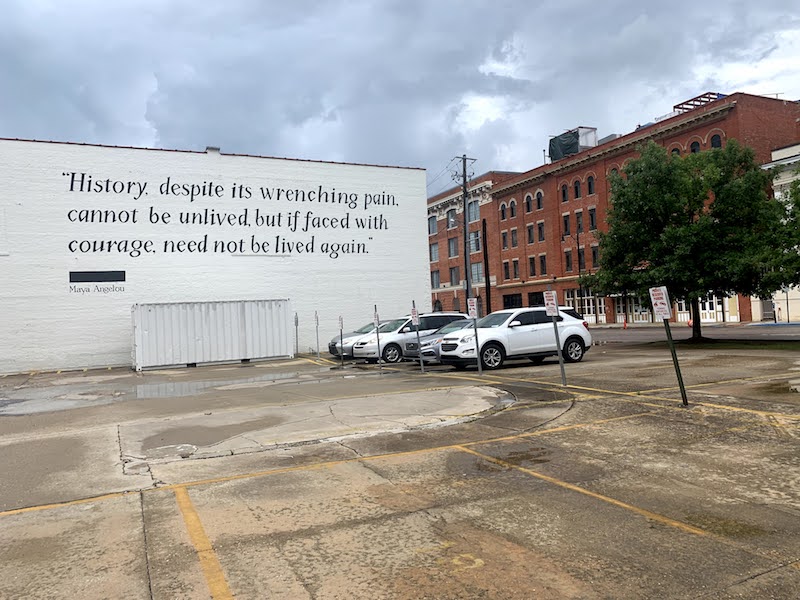
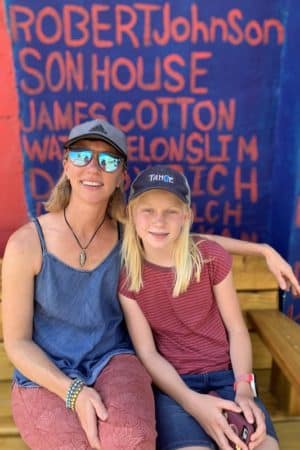
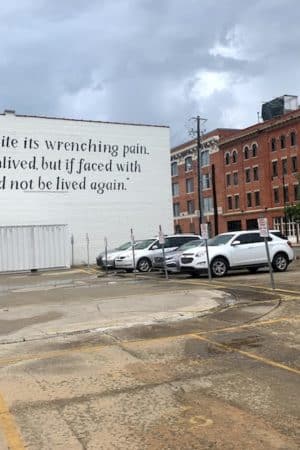
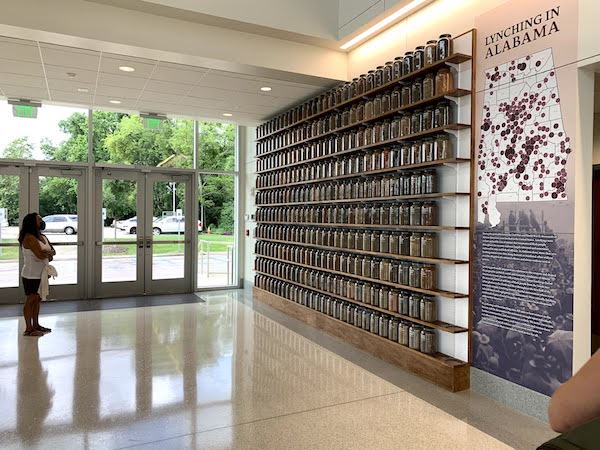
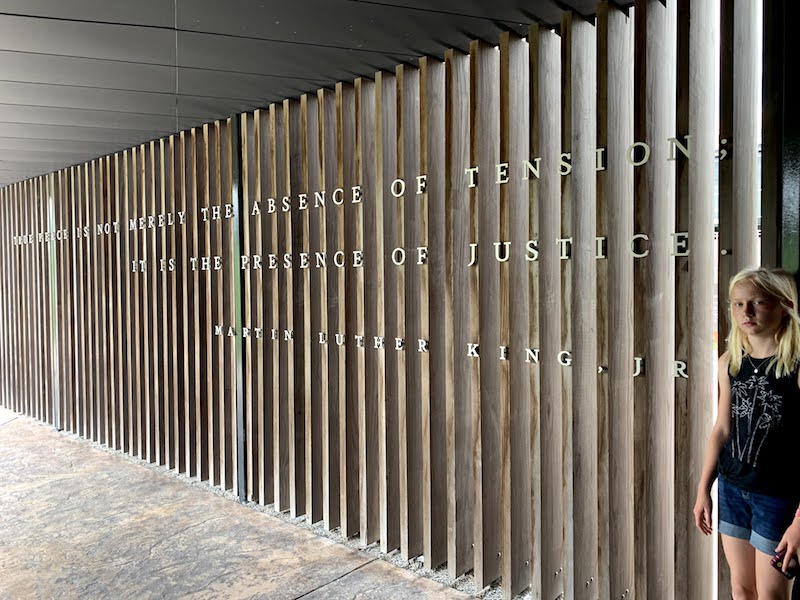
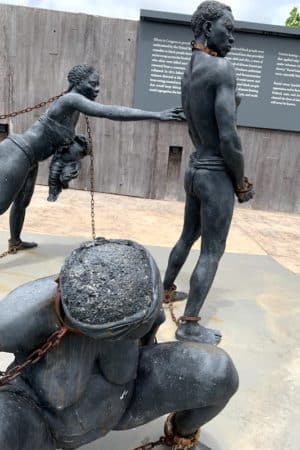
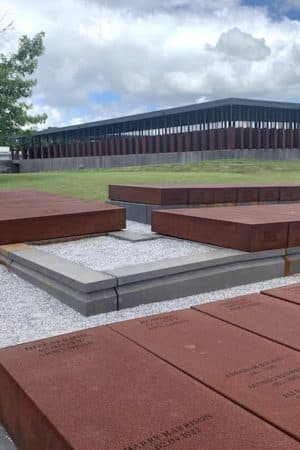
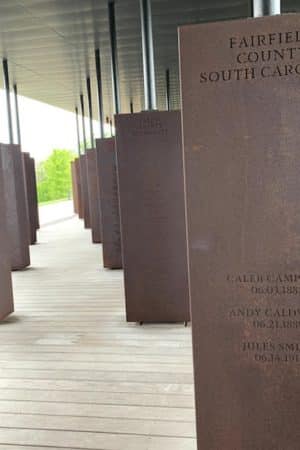
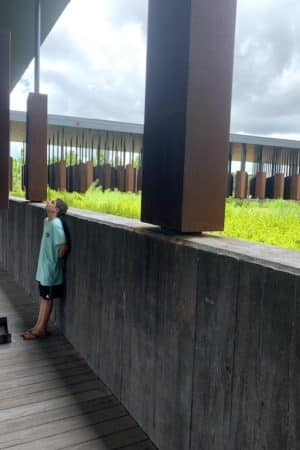

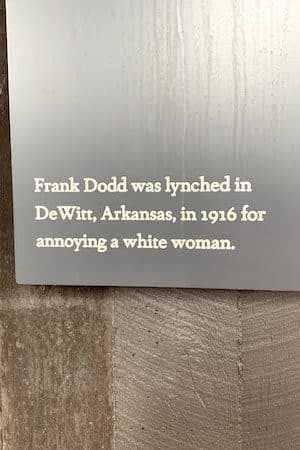
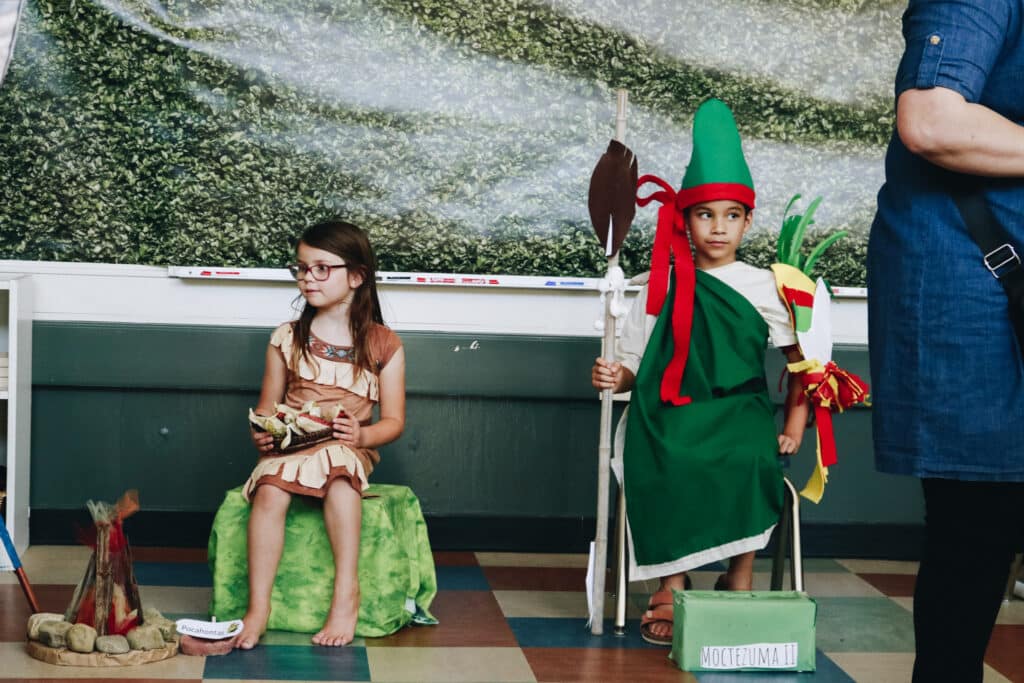
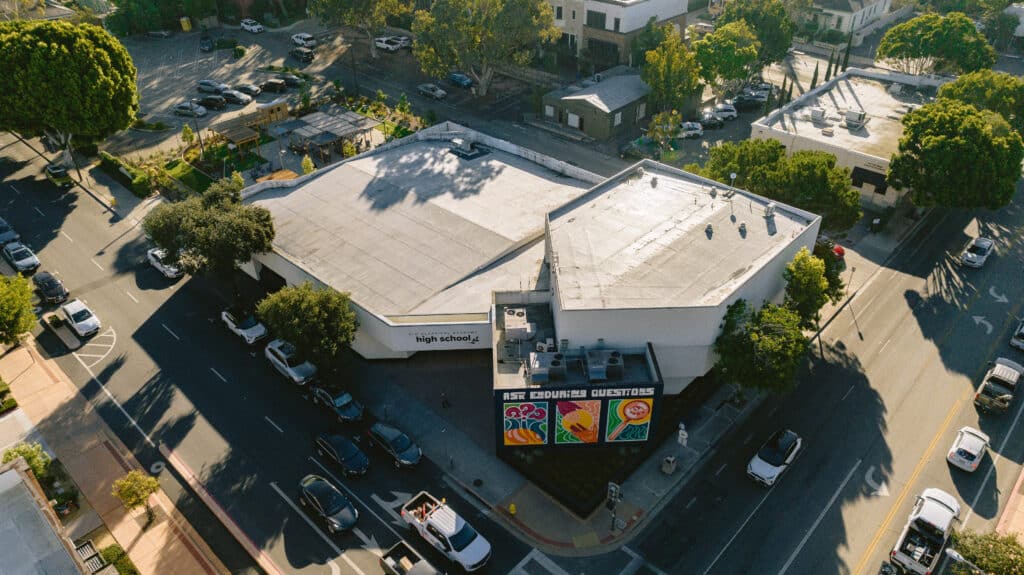
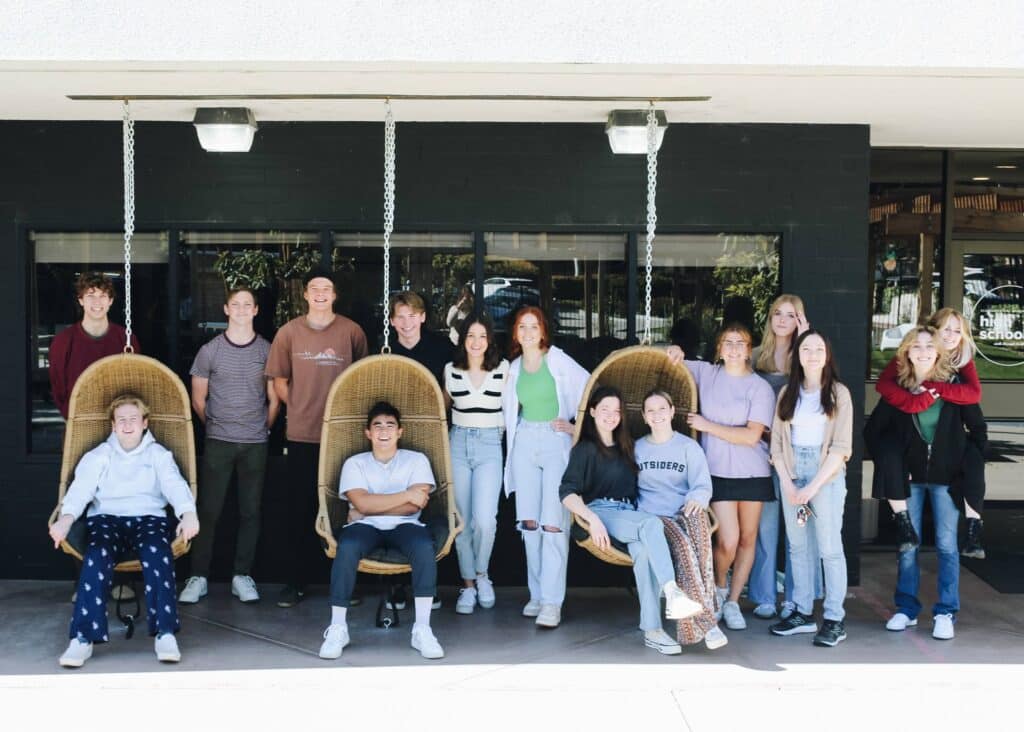





3 thoughts on ““Black History in America: Opening Hearts & Minds” trip reflection by Rachel Nichols”
What a wonderful, enlightening, yet sobering experience! Thank you for sharing, Rachel. I appreciated reading your thoughts and insights. I look forward to going the next time this trip is (hopefully) planned.
Very well written Rachel, thank you for sharing your experience and feelings. There is so much of our history that is left out of our teachings and history books.
This is beautiful, I’m so proud of you all for doing this.